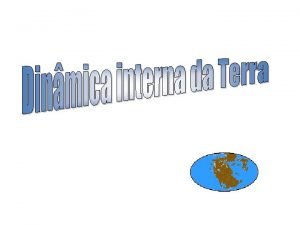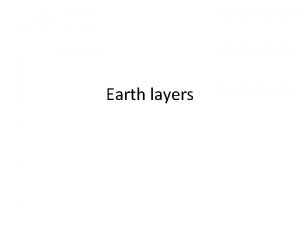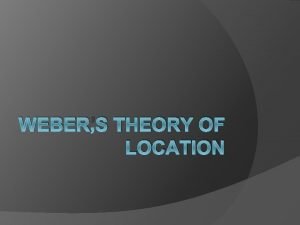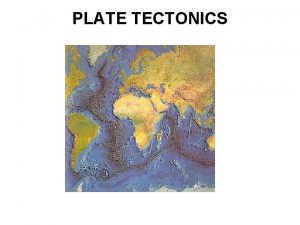Scientist Alfred Wegener looked at maps of the




- Slides: 4

Scientist Alfred Wegener looked at maps of the Earth, similar to Image 3, and noticed that if you move the continents around they fit together. For example, South America and Africa fit like pieces of a puzzle. Dr. Wegener thought that the moon’s gravity is what moved the continents. He predicted that all the continents fit together in distant past (Image 1), but the moon’s gravity pulled on the continents causing them to break apart (Image 2) and that the moon’s gravity continues to pull them today (Image 3). To move around the planet the continents would need to plow through the planet’s crust similar to a farmer’s plow through a field. This plowing would cause shallow earthquakes that are at the Earth’s surface. Dr. Wegener believed that the ocean floor was mostly flat so continents could plow through it. • • • Initial State: The continents were joined together in the distant past. Mechanism: Gravity from the Earth’s moon pulls on the continents causing them to move. Prediction #1: The seafloor is relatively flat. Prediction #2: The continents cause shallow earthquakes as they plow through the seafloor. Prediction #3: Mountains will form (mountain formation is called orogney) at the edges of continents because they “crumple” and deform from the pressure of the continent pushing through the ocean floor Current State: The continents are no longer joined together as one and continue to move because of the moon’s gravity causing shallow (not deep) earthquakes.

Pangea Animation

Plate Tectonics Model Image 1: Scientists noticed that the edges of the continents seem to fit together Image 3: Present day continent locations Image 2: Mantle convection causes plates to move. Plate tectonics is the idea that the Earth’s surface is made up of large chunks of rock called plates. Some plates are underwater. So the seafloor is one kind of plate. Other plates are above sea level and these are the continents. The rock under the Earth’s surface is hot and the rocks very slowly move in a pattern like boiling water in a pot. Hot rock called magma rises. If it finds a crack in the Earth’s surface it pushes its way to the surface as a volcano. If the magma cannot break through then it gets pushed to the side, cools off, sinks down, heats up and rises again as a circular current. Plate tectonics also states that the continents all used to be joined together as one, just like continental drift, but broke apart due to convection currents that go in opposite directions like the one pictured above. The continents keep moving because when a thick continent plate and a thin oceanic plate collide the ocean plate gets pushed under the continent and then gravity pulls it back down into the Earth’s mantle. • • • Initial State: The continents were joined together in the distant past. Mechanism: Currents deep underground, in the Earth’s mantle, drive plate motion. Prediction #1: The seafloor is rough and includes ridges (mountain ranges) where magma comes to the surface. Prediction #2: Movements of the plates can cause shallow and deep earthquakes. Current State: The continents are no longer joined together as one and continue to move because mantle convection causes plates to move.

Model Comparison Continental Drift • • • Initial State: The continents were joined together in the distant past. Mechanism: Gravity from the Earth’s moon pulls on the continents causing them to move. Prediction #1: The seafloor is relatively flat. Prediction #2: The continents cause shallow earthquakes as they plow through the seafloor. Current State: The continents are no longer joined together as one and continue to move because of the moon’s gravity causing shallow (not deep) earthquakes. Plate Tectonics • • • Initial State: The continents were joined together in the distant past. Mechanism: Currents deep underground, in the Earth’s mantle, drive plate motion Prediction #1: The seafloor is rough and includes ridges (mountain ranges) where magma comes to the surface. Prediction #2: Movements of the plates can cause shallow and deep earthquakes Current State: The continents are no longer joined together as one and continue to move because mantle convection causes plates to move. Question 1: What are similarities between the models? Question 2: What are differences between the models?





